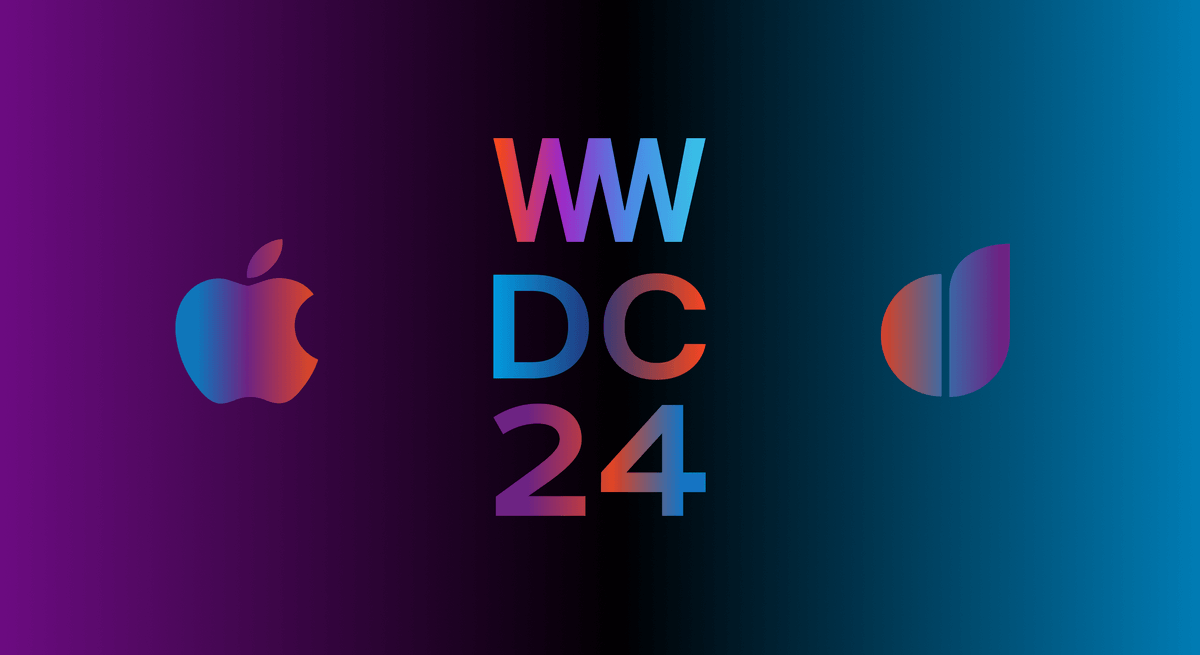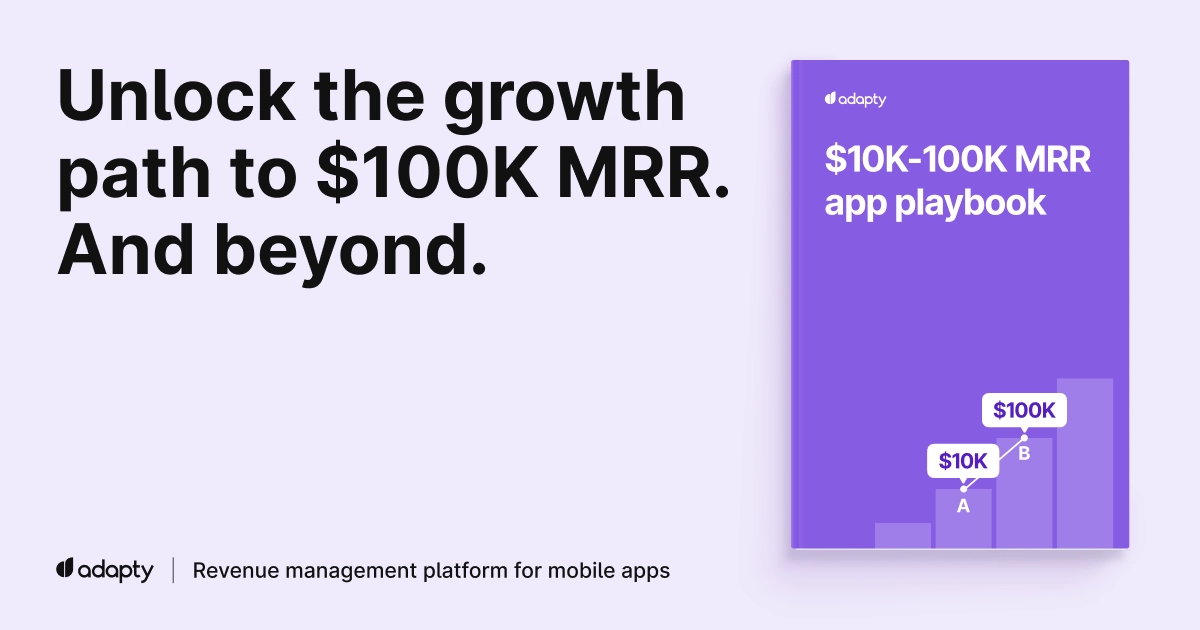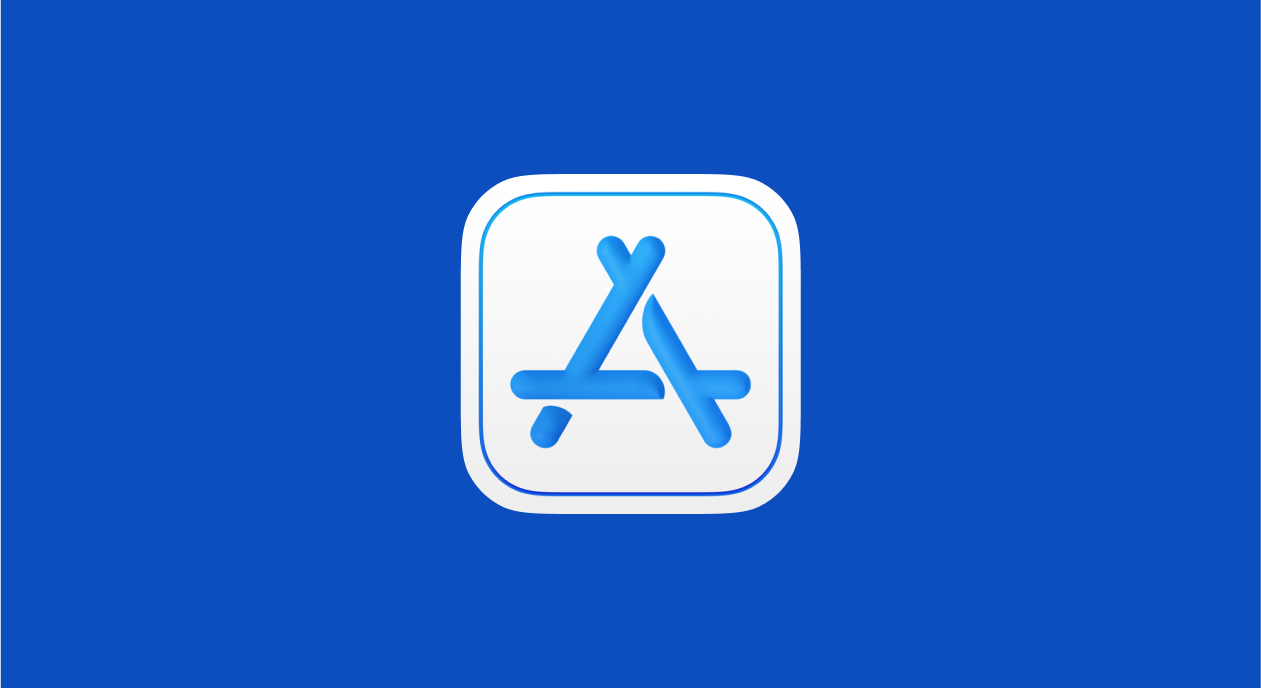Apple’s Worldwide Developers Conference (WWDC) 2024 showcased a range of remarkable updates and innovations across its ecosystem. This year’s event emphasized advancements in AI, developer tools, and software capabilities, aiming to empower developers to create more powerful and efficient applications.
A lot of focus was put on software updates for Apple devices, new features for visionOS, design, and gaming. But in this article, we’ll make a recap of the most important updates relating to in-app purchases, app promotion, and mobile development. Make yourself a cup of tea, because there’s a lot to uncover!
App Store Connect
App Store Connect received several updates aimed at improving app discovery, testing, and customer reach. The updates don’t seem to revolutionize the process of working with your iOS apps, yet with every year App Store Connect does become more versatile and willing to be convenient for its users.
Featuring nominations
Developers can now nominate their app content for potential featuring on the App Store. This process allows developers to highlight significant updates or new features in their apps, increasing the chances of being showcased on the App Store’s Today, Games, or Apps tabs.

New TestFlight updates
TestFlight has received several enhancements to improve the beta testing process:
- Invitations now include the app description and category, and you can optionally add screenshots to highlight new features.
- Developers can set criteria for external testers, such as device and OS specifications, ensuring relevant feedback.
- New metrics provide insights into how successful public links are at enrolling testers, including views and acceptances.
Deep links in custom product pages
Custom product pages can now include deep links, directing users to specific in-app content from the App Store. This feature allows for more targeted marketing campaigns and improved user engagement by linking to relevant app content directly from ads or other promotional materials.

Promote Your App feature
The new “Promote Your App” feature in App Store Connect provides tools for creating and sharing marketing assets. Developers can generate promotional images and videos to use in social media, ads, and other channels.

Win-back offers
Apple has introduced win-back offers to help developers re-engage former subscribers. These offers can be customized to provide incentives, such as discounted subscription rates, to users who have previously canceled their subscriptions. Developers can configure the eligibility criteria and incentive types, such as offering a reduced subscription price for a set period.

These offers are displayed across the App Store, including on product pages and in editorial selections, providing a broad reach to potential returning users. The newly added Streamlined purchasing feature, which is enabled by default, allows users to make a purchase right away by clicking the “Subscribe” button on an offer ad.
StoreKit and in-app purchases
Not much attention at WWDC24 was paid to in-app subscriptions, but the few updates look rather interesting. Apple still seems to be invested in providing developers with more native instruments for working with transactions and offers.
Original StoreKit deprecation
First and foremost, Apple has officially deprecated the original StoreKit APIs. This means that while existing apps using these APIs will continue to function for now, developers should transition to the new StoreKit 2 APIs to take advantage of ongoing updates and support. It’s high time you transitioned to StoreKit 2 to ensure your apps remain up-to-date with the latest features and security enhancements.

New Offer model
Transaction and RenewalInfo now include a new member called offer which is a new type containing all offer-related information, such as ID, offer type, and payment mode. This addition allows developers to better track and manage different promotional offers and understand their impact on user subscriptions.

In-app purchase transaction history API
The new in-app purchase history API provides a detailed history of all transactions associated with an app. This API supports pagination and uses JWT authentication for secure communication, allowing developers to manage purchase data efficiently and securely.

Testing enhancements
StoreKit Testing in Xcode has been improved for more comprehensive testing scenarios. Developers can now test subscription offers, manage transactions, and simulate various purchase conditions directly in Xcode. This includes debugging and testing in-app purchases across multiple devices and simulators simultaneously.
StoreKit views customization
Enhancements to StoreKit views offer more flexibility in how subscription options are presented within apps. Developers can create compact, informative layouts that better communicate the value of subscriptions to users. Apple added 3 new paywall styles that differ in the way the product section is presented. On all of them, it occupies less than half of the bottom part of the screen and allows side-scrolling, instead of scrolling vertically, which should leave more space for useful content.

New localization features
Apple also introduced several key updates aimed at making app localization and multilingual support more efficient and powerful for developers. The inability to provide high-quality app localization still remains a huge problem for many developers as it leads to higher churn and bounce rates in foreign markets. Apple comes closer to solving it by adding a few updates:
Text input and display
Apple added a few UI/UX fixes which, if integrated into your app, should significantly ease the experience for multilingual users. For example, they can now type and view text without needing to switch between keyboards frequently. Fonts and styles tailored to different languages are now handled properly. The same goes for formatting personal names and using localized formatting for numbers and dates.
String Catalogs
Advances in the String Catalogs, which were introduced last year, simplify the localization process, making it easier for developers to manage and translate text strings within their apps. They now detect common validation issues and let you fix them with a single click. Some of the strings can now also be marked as “Don’t translate” if you want to leave the string as is. Overall, this tool helps ensure that all text elements are accurately localized and contextually appropriate.

Translation API
Notable enhancements to Apple’s Translation API focus on simplifying and expanding multilingual capabilities within apps. Two key features highlighted are the Simple Overlay and Flexible Translations.
- The Simple Overlay feature enables developers to quickly display translations directly in the system UI. This is particularly useful for on-the-fly translations of user interface elements without requiring extensive backend changes. It allows text to be translated and overlaid on existing UI components, facilitating a seamless integration of multilingual support into apps.
- Flexible Translations provide a more comprehensive approach to managing multilingual content. This feature supports translating larger batches of text and is ideal for applications that require extensive localization. It leverages advanced translation models to handle complex translation needs, including context-sensitive translations and nuanced language variations.

AdAttributionKit

Apple unveiled AdAttributionKit, a new framework designed to enhance ad attribution while maintaining user privacy. This framework is set to replace the existing SKAdNetwork (SKAN) and offers several advancements aimed at providing more comprehensive and privacy-preserving ad attribution solutions. Here are the main features:
- Privacy-Preserving Attribution: AdAttributionKit supports anonymous crowd-based measurement techniques, making it difficult to identify individual users from attribution data.
- Enhanced Measurement Capabilities: The framework allows for detailed measurement of ad-driven installs and subsequent app engagement. This includes support for re-engagement, enabling advertisers to track not only new installs but also re-engagements with existing users.
- Interoperability with Alternative App Marketplaces: Unlike SKAdNetwork, which was limited to the App Store, AdAttributionKit is designed to work with alternative app marketplaces as well.
- Support for Custom Creatives and Click-Through Attribution: AdAttributionKit includes support for custom creatives in click-through attribution. This feature allows advertisers to use unique creatives for their ads and measure their effectiveness more accurately.
- Integration and Testing: Apple has provided comprehensive documentation and tools to assist developers in adopting AdAttributionKit. Testing support is available through Xcode, enabling developers to simulate various ad attribution scenarios and ensure their implementations work correctly before deployment.
Swift 6

Since its inception, Swift has become a cornerstone of Apple’s development ecosystem. The latest version of this powerful programming language builds upon the foundation laid by previous versions, focusing on enhancing safety, performance, and developer productivity. Here are the most important updates and new features:
Compile-time data-race safety
It’s a significant enhancement that helps detect and prevent data races in concurrent code. This feature improves the reliability and safety of concurrent programming by identifying potential issues at compile time rather than at runtime.
Expanded tooling support
Swift 6 extends support for additional code editors, making it more versatile and accessible to developers using different development environments. This includes better integration with popular editors beyond Xcode.
Swift Assist
Integrated into Xcode 16, Swift Assist is a new AI-powered tool similar to GitHub Copilot. Swift Assist helps developers by providing code suggestions, completing code snippets, and generating boilerplate code based on natural language prompts. It integrates seamlessly with Xcode and understands the latest Swift language features and Apple SDKs.
Noncopyable types
This feature allows developers to define types that cannot be copied, which is particularly useful for managing resources such as file handles or database connections. Noncopyable types help prevent errors related to unintended copies of objects.

Improved testing framework
Swift 6 enhances the testing framework with more expressive and customizable test functions. Developers can now parameterize tests, use custom test names, and organize tests with tags, making it easier to write and maintain comprehensive test suites.
Enhanced C++ interoperability
Swift 6 improves interoperability with C++, allowing developers to integrate Swift code more seamlessly into existing C++ projects. This feature is crucial for developers working in mixed-language environments.

Swift on Server
Significant advancements in the Swift on Server ecosystem were introduced, including tools and packages for building server-side applications. These improvements also contribute to making Swift a more viable option for backend development.
Xcode 16
Along with the new version of Swift, WWDC 2024 also introduced Xcode 16, bringing a host of new features and improvements aimed at enhancing developer productivity and app quality.
Predictive code completion
The predictive code completion engine in Xcode 16 is trained specifically for Swift and Apple APIs. It runs locally on a developer’s device, ensuring privacy and providing relevant suggestions quickly, even when offline. This engine enhances the coding experience by predicting and suggesting entire lines of code based on a few characters typed by the developer.

Improved previews and dynamic linking
Xcode previews now support a new dynamic linking architecture, allowing the same build artifacts to be used for both previews and code execution. This improvement streamlines the development process by reducing the need for multiple builds and ensuring consistency between previews and the final app.
Swift Testing

Xcode 16 introduces new testing tools, including Swift Testing, which offers expressive APIs for writing tests. These tools make it easier to write, organize, and run tests, ensuring higher code quality and more reliable applications.
New build system
The new build system in Xcode 16 features explicitly built modules, improving transparency and efficiency in the build process. This system optimizes build times and allows for better management of dependencies and modules across different targets.
Additional APIs and tools
Xcode 16 includes updates to various APIs, such as the Controls API for enhanced functionality in apps and AccessorySetupKit for better Bluetooth accessory management. The Smart Stack on Apple Watch now supports more contextual cues, and developers have new options for using double-tap gestures.
Was it a big deal after all?
Although this year’s event didn’t bring anything revolutionary for mobile app developers, most of the announced tools, features, and updates should facilitate app development, testing, and promotion within Apple’s ecosystem for most indie developers. Publishers and big app developers are only left to enjoy rather questionable feature nominations and win-back offers.
Even though Apple seems to show how it loosens its monopolist grip here and there (e.g. allowing alternative stores and payment services), it still keeps its best interests at keeping developers under their control as much as possible by adding to its ecosystem and tools more features usually found in 3rd-party services.
From the developer’s perspective, such an approach may seem rather beneficial: less expenses, native support, and more confidence in security. On the other hand, what Apple does is often a half-measure: they introduce new features and get pretty slow to support and develop them further.
3rd-party services that app developers use (for analytics, transactions, or A/B testing) are much more eager to publish fresh updates and introduce new features. So after all it still makes sense to use the most out of Apple’s closet but leave the real business challenges to professionals.
For example, using Adapty along with the fresh Apple updates opens much more possibilities:
App + paywall localization
In addition to the newly introduced localization and translation features, you can use Adapty to create several custom paywalls, adapt their visuals to every country, and also use a convenient string format for accurately translating each paywall.

Custom product pages + custom paywalls
Create custom paywalls in a few minutes with Adapty’s paywall builder and link them to fresh win-back offer ads or your custom product pages in the App Store.

Detailed mobile analytics
Slowly but steadily Apple does a good job of providing developers with more and more access to their transaction information, but it’s still far from being enough. Adapty tracks 18 subscription events and presents precise mobile analytics that shows numerous metrics along with user cohorts, LTV, Retention, and much more.

Integrate Adapty for free and grow your subscription revenue the right way!




